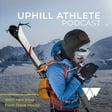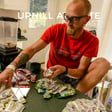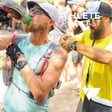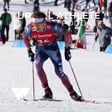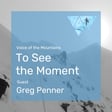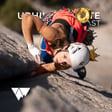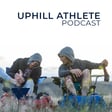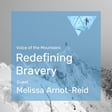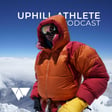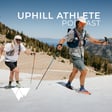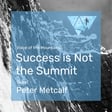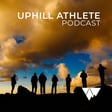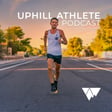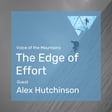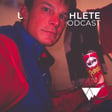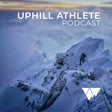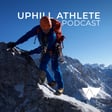Become a Creator today!Start creating today - Share your story with the world!
Start for free
00:00:00
00:00:01

Introducing Chamonix Mountain Fit. A video-based, guided at-home, progressive strength program.
Join Uphill Athlete co-founder Steve House and Chamonix-based physical therapist Neil MacLean-Martin as they discuss Uphill Athlete's new Chamonix Mountain Fit program. This multi-part program of strength, mobility, functional exercises is a fantastic resource now available to the UA community. Listen to Steve and Neil as they discuss the background, and creation of this program, and get a taste of what this series has to offer mountain athletes.
Transcript
Introduction to Uphill Athlete Resources
00:00:01
Speaker
Welcome to the Uphill Athlete Podcast. These programs are just one of several free services we provide to disseminate information about training for mountain sports.
00:00:10
Speaker
If you like what you hear and want more, please check out our website, uphillathlete.com, where you'll find many articles and our extensive video library on all aspects of training for and accomplishing a variety of mountain goals. You'll also find our forum where you can ask questions of our experts and the community at large. Our email is coach at uphillathlete.com, and we'd love to hear from you.
Meet Neil McLean Martin and Chamonix Mountain Fit
00:00:35
Speaker
Hello and welcome to the Uphill Athlete Podcast. Today I'm here with you. This is Steve House and I have Neil McLean Martin with me from Chamonix. Neil is a physical therapist based in Chamonix and we have just finished producing a really cool resource for our Uphill Athlete community that we call the Chamonix Mountain Fit. Neil, welcome.
00:01:05
Speaker
Steve, thanks for having me. Yeah, so for those that haven't seen it yet, why don't you just tell me a little bit about what this is that I'd like to say we co-created, but really you created.
00:01:19
Speaker
Right well we've been practicing the physiotherapy and the training here in Chamonix now for 12 years and really this all came through through treating so many knee injuries from all the skiing, mountaineering and all the other essential mountain sports that go on.
00:01:36
Speaker
We were getting 50, 60, 70 ACLs coming through the clinic on a regular basis every year. And with that, we evolved some group classes and we started working through these and we find people would come in, we'd have a cohort at the start. And once they started with that group, obviously being Chamonix, it's a place where people do tend to come and go a little bit.
00:01:57
Speaker
and they wanted to actually, they wanted to stick with us and so we started off back eight, nine years ago with this actual program whereby we'd have first generation technology with a phone in the corner of the room and people would join us on Skype and they'd seem to be able to carry on participating.
00:02:16
Speaker
This then evolved into something we actually decided to create into our program as prevention for injuries so that people could actually get trained up ready for the season.
Evolution and Expansion of the Program
00:02:28
Speaker
So that then evolved, we videoed our first round and that went out as our ski fit program.
00:02:33
Speaker
And now we've been doing regular classes through the year. We've been teaming up with various organisations in the town, and even when we try to limit our outdoor classes to 40, we still regularly have 60, 65 folks showing up in the middle of winter, getting ready for the season to start, kind of November, it's raining, it's one degree out there, the wind's howling. And you know, people just keep coming. You think they're absolutely insane.
00:02:59
Speaker
But it's given us a chance to keep this program evolving, keep people getting ready on it, and it's become a fixture in the calendar. So with you guys from Apalathi and your support, we've come back and we've put this all together. Not just for skiing, this has now evolved into much more of a complete package, really, for anyone who does anything on the mountain. And that covers the running, mountain biking, cross-country skiing, mountaineering.
00:03:23
Speaker
it really is the fundamentals of movement you start moving correctly when you when you start your training programs and you find you progress more quickly you get your consistency of training you can miss those days and we all know that's the key to to real progress when it comes to physical development absolutely and you know that kind of
00:03:43
Speaker
I want to just say I've been incredibly impressed by how well this turned out. There's five levels, level zero, one, two, three, four, plus a little introductory explainer video. And it's sort of a self-guided, no equipment strength program that you can do by yourself with these recordings. Neil basically guides you through these workouts that last approximately one hour.
00:04:10
Speaker
And they're fantastic. And it started for us, actually, with SkiFit. And I can't remember who first told us about SkiFit or how we found it, but SkiFit, for those of you that don't know, as he explained, is this similar video-led
00:04:33
Speaker
Neil, by a video, leads these strength workouts. Basically, this is sort of the same idea, right, Neil? No gear, kind of minimal gear, body weight, exercise. Exactly.
00:04:46
Speaker
Exactly. It's that chance for you to be able to work away at home. You don't need, we use a few water bottles for weights and things like that, and just for those little bit of instabilities that allow you to work on the dynamic control. But essentially, yeah, you don't need any fancy gym equipment. You're not throwing around big weights. Because of that, a lot of the work is done on single leg standing, is done through single limbs. So you really are developing awareness of movement and control.
00:05:11
Speaker
And all the time we're focusing on the person doing it, understanding how their body feels. So if you do pick up on asymmetries, you find one exercise is particularly difficult, your strength endurance on doing certain things on one side doesn't match your other side, then we give you cues, you know how to then develop it. If your balance is really different from side to side, again, you're laid on how to work through those things, but it gives you the opportunity to understand how you move and what you actually need.
00:05:38
Speaker
And anytime you can work on your weaknesses, you're always going to see good improvements. So Scott and I started using this early on in the evolution of uphill athlete with our coach athletes, where we would just send them a link to your program and say, why don't you just sign up for this? And I want you to do this for, you know, we're going to do this for the next eight to 12 weeks. And especially we use it in the transition period with new athletes because it would accomplish what you just
00:06:08
Speaker
laid out.
Challenges in Program Development
00:06:10
Speaker
You're really great about
00:06:14
Speaker
helping people understand how to move correctly. And the way you explain that, I think, is honestly, quite frankly, some of the best I've ever seen in terms of how to execute movements properly. We'll only talk more about that later, but that's kind of how we came to know you, Neil, is through your ski fit. So congratulations on
00:06:41
Speaker
on that that's been a really cool and it's been a part of my personal life my wife has been doing ski fit in our living room for years so i also showed her got her into it it's one of those it's one of those funny things you hear from time to time someone comes home and uh you can hear uh someone exercising and hear my voice in the background and they're never quite sure what's going on yeah yeah exactly
00:07:06
Speaker
So, um, so then I want to, what happened was that Scott and I actually thought, you know, that doesn't look too hard. We want to make our own version of that because as you pointed out, it's kind of a little focused on skiing. And we said, well, you want something a little bit more focused on, you know, single legged uphill movements, like mountain running, mount nearing, and these kinds of things. Um, and, uh, we Scott tried to do one in his gym.
00:07:34
Speaker
that I tried to film one in my garage gym and those were complete disasters. Like we look right or like forgetting, like it's really difficult. And what you can see when you're in your videos is, you know, as a physical therapist, you're used to doing movements and explaining at the same time. It's probably what you've done all day, every day for most of your professional life. So, and that's a really hard thing to do, it turns out.
00:08:02
Speaker
I could do some squats with no weight and explain proper technique. I know how to do that, but they don't actually do it. It doesn't look that good. My brain isn't coordinated enough because I haven't done it 10,000 times like you have.
00:08:22
Speaker
I said really, that is the absolute key to these things is the fact that this is the script, this is the way we're thinking day in, day out with our clients, with our rehabbers, moving in from someone who doesn't have any movement ability to move through that retraining, getting someone moving again, moving into a robustness and then finishing off getting someone ready to perform again. It is something that you have to practice and it's a dialogue that you have to use all day long and you're constantly refining it as well.
00:08:51
Speaker
Having done so many of these actual classes as well, you know how people respond and you know what the cues are that people can identify with. So it's really gratifying when you actually get your explanation right because you see that transferred and how that person moves really quickly. It's a really fun result when you see it working well.
00:09:14
Speaker
And we thought arrogantly that we could just do that ourselves and recreate that. And it turns out to be completely impossible without that background that you have.
Neil's Impact and Community Benefits
00:09:24
Speaker
Because then we went and we enlisted one of our coaches, Caroline Parker, who does a lot of hands-on training and owns our own physical gym in Colorado. And we hired, you know, we spent money and we got this videographer and had night professional video and audio and lighting and all that.
00:09:47
Speaker
And she could do all the movements perfectly and did great demonstrations. But then again, the audio explanations were just so tricky. And we thought, oh, we'll just be able to rerecord this. We'll just do a voiceover. And then it looks funny. And it's just like, we spun our wheels on this.
00:10:09
Speaker
For years, literally, and so, and then we were kind of throwing up our hands in frustration. I don't know which 1 of us 1 of Scott, or I was like, we should just, we should just call meals. See if he would do do something something like that with us and we did. And here we are. So we're so glad that that we did that. And that this worked out because it's.
00:10:28
Speaker
I think it's a great product. We know it's a great collaboration Steve. I would say conservatively 90% of the clients and the patients who come through our clinic already know you guys so well. There are so many copies of your books around this town.
00:10:45
Speaker
So to be able to feed forward into that community and be a part of that, it's really satisfying because we are part of the community here in Germany and we do transport everyone here, but I think now we've got a bit more reach with that, getting in there, helping people get more out of their training full stop. For me, that's a no-brainer how I want to be involved in that sort of project.
00:11:05
Speaker
Yeah, that's great. I want to just start with this example because I want to dig into your thoughts and how you develop these, as you call them, dialogues around movement cues. But I think that this is one of the real strengths of this program, besides the convenience of having
00:11:25
Speaker
you know, a sort of a strength workout in your pocket that you can just sort of, you can watch from anywhere and do in a hotel room or do at home or do anytime, you know, the kids are napping is in our case at my house. Besides all of those advantages, I think what we're really outstanding about this is these movement cues. And this is something you just can't get from like
00:11:51
Speaker
you know, some celebrity athlete, whether they're, I don't know, you know, whoever they are and expect them to be able to do this. I'm going to just play this little section where you have a really great explanation of the squat. Let me see if I can cue this up and get this to
00:12:09
Speaker
to play. So here you're, uh, this is actually out of one of the levels, the first level, which you call level zero, uh, where we're explaining, you are explaining how to, uh, a squat correctly. And it doesn't really matter front squat, back squat, but this is some great, uh, great, um, dialogue, as you say. I think we see all the time getting the clinic. Wherever you reduce squats, they tend to lose control of this relationship between the, the top of the pelvis and the bottom of the ribs. So if I'm
00:12:39
Speaker
If I'm coming down and I lose this control that I'm talking about, that space either collapses down or, which is the more common one I see, which is what people try to do in terms of thinking it's a good technique, they actually really arch the back and they contract through here thinking that's them keeping their back straight. Whereas in fact, you need to keep a neutral position. So this space doesn't change at all. This unit remains solid. This is our trunk control. So in the squat, coming down,
00:13:08
Speaker
into the initiative. So, what the audience isn't seeing, because this will be a podcast, is you're also demonstrating all these things. We're talking about the relationship between the bottom of the rib cage, the top of the pelvis, both in the, you know, collapsing or extending. At the same time demonstrating, and then we've got, we used a, you used a green screen, and you've got a further demonstration on this green screen on the side that's showing examples
00:13:34
Speaker
and proper alignment. And it's just a really fantastic guide for people on how to exercise safely and correctly. And just hats off, man. It's really, really well done.
00:13:48
Speaker
That's great. I mean, one of the things we brought to this new video is this ability to have the video in video on that green screen. And for me particularly, what I wanted to try and get across was another level of interactivity within what we were doing. And having that video there really, from my point of view, allows me to sort of, at the same time, I can demonstrate what is good snake and also what is bad technique and try and make those sort of things really obvious. Because it's that level of interactivity. You get much more out of it again.
00:14:18
Speaker
These are ones that hopefully when you look through them, the first time you watch it, you do get an understanding of what's going on. But then you can actually go, instead of exercising during it, you can go back and actually re-watch it and actually understand those movements. You adopt that from watching these parts. And it's that extra interactivity that gets that across much more easily.
00:14:37
Speaker
Yeah, very, very cool. I really like it. And so how do you handle one of the questions I've heard a lot and one of the things I've explained to a lot of people around this is how you handle people progressing.
Who Can Benefit from the Program?
00:14:49
Speaker
Since you're obviously this is recorded, you're not physically there. So how do you, how did we do that? How do you, how did you solve that?
00:14:57
Speaker
Within the programme it's actually really quite simple. We promote all the time this quality over quantity. So it's not about jumping through the levels you progress through them. So you have to really get all those movements tiled in.
00:15:13
Speaker
You have to feel like you have everything in control. Once you feel, you know what, I've got all the moments, I've got capacity to keep going longer than what we're doing on that current level. Everything is building with progressions. So I'm never going to be taking you out with your comfort zone too far. It's going to be nudging you, it's going to be encouraging that it's not suddenly a huge difference from level three to four.
00:15:35
Speaker
we do we do we wrap everything up but everything is a build so we take the those movement patterns we've used around the squat around basically using the anterior chain posterior chain building them through using the strength endurance the balance and each one evolves so it's really once you've got all that dialed in and you've got the movements happening and then you can start to put a bit of speed into it and then the actual muscular endurance on top of all of that together that's really
00:16:00
Speaker
when you are moving through. And to be honest, you'll know very quickly if you've tried to do a level that's too hard for you, you won't keep up. But you just get, you go back to the level before you get those bits dialed in, and then you go back to the level above and you will find, you will find it's within that optimal training zone where you're adapting and you're not being overextended. Yeah, exactly. We talk about that all the time on up-to-last news channels.
00:16:29
Speaker
Who did you have in mind for this? Did you have a kind of avatar for a particular athlete that you had in mind when you were creating this particular series?
00:16:44
Speaker
Well, yeah, I mean, really, it has come about from all the clients I work with here in Chamonix. So it really is for anyone who wants to get serious about their sport, and they're going to be putting some time and effort into their training. So if you've taken the time to think about what you're trying to achieve, if you've got goals, really, this works for them. And, you know, we've got plenty of people here in the Valley, lots of mountain guides who will focus on doing levels one and two.
00:17:13
Speaker
And for them, that matches what they need to get out of it. We then also get the higher level guys who are starting to compete right up to the sponsored athletes and the pros who will be working hard going through levels three and four. So it does work very nicely for them. It will work for pretty much anybody. The key thing is to use it at the right time within the year. So you may have three or four blocks where you go back and you top up this type of training.
00:17:42
Speaker
as you obviously when you're phasing things, you're periodising through the year, this is a really nice way to transition between one sport from your winter sports into your summer sports. So again, you top up all the strange things. So if you're preparing for winter through October, November, you can have a good eight to 12 weeks on the programme. Then obviously you're transitioning a bit more into your sport specific training and you're actually getting out there doing it. And you're coming off the skis, you're coming off the mountaineering and you're going into your summer touring that works.
00:18:10
Speaker
or if you're going into your summer mountaineering program, it builds you in through from there. So we find a lot of guys here will do an autumn program, and then they'll revisit it once in a while, maybe through the season, but then have another concerted block when it comes to springtime. And for them, it works very nicely because you can start it, you can see the way you progress through it, and once you've got to a certain level, you really are maintaining. And again, it comes back to that ability to identify if, through from the season, you picked up anything that's imbalanced you.
00:18:39
Speaker
you may find that you weren't aware of things changing through the season and this is a really nice way to go back, re-examine, find out what you actually need to work on before you attack your next big block of training.
00:18:52
Speaker
Yeah, that makes a lot of sense. I think that, you know, this is exactly what we envision. You know, it's essentially, you know, to put it in our, the uphill athlete
Focus on Injury Prevention and Rehabilitation
00:19:04
Speaker
vernacular, and not just the uphill athlete vernacular, but the endurance vernacular that we borrowed from, it's sort of a transition period strength plan, really. But it's a very adaptable one. It fits in your pocket, literally, and it can go anywhere with you. So, I think it's
00:19:21
Speaker
It's a great asset to people. And we also have mostly, you know, the athletes that we have that stick with coaching, particularly year after year after year, they're typically doing exactly what you said. They're cycling through sort of two seasons a year where they're more or less completing a transition type period in the, typically, like you said, in the autumn and then again in the spring because they're
00:19:49
Speaker
main seasons where they want to do their sports are summer and winter. And more and more, that's... Yeah, I mean, our experience here in the clinic is that typically around April, May time, when everyone's been coming off their ski fitness, they're touring, and they've got all that huge engine that they've built up, and they go from skiing and start charging around trail running.
00:20:17
Speaker
And of course, the tendon adaptation hasn't kicked in, and basically they're able to trash their own bodies without the suitable ramps and transitions. And it's something, again, what we love to hear is that people, and it's particularly the guides, we had this feedback early on, just saying, you know, on the 1st of January, 1st of December, when skiing opens up, you know, I feel like I've got my February legs already.
00:20:43
Speaker
everything's already up and running. They've got all that strength protection and they're not having to be overly cautious and cut days short where they think, right, I need to be, it's getting towards the end of the day. I don't want to overextend today. And yeah, so it really does work in that transition phase. It prevents, for sure it prevents people coming in to see us with injuries and also just improves your whole experience of being ready to go when that next season kicks off.
00:21:10
Speaker
Would this be something that you would use with people actually rehabbing from injury?
00:21:16
Speaker
Indeed, yeah, it's something really, because it is based on fundamental movements. I can say to people, well, yeah, use the core section. I want you to kick in and dip into the dynamic stability, and then eventually people link all these things up. I mean, it's a fundamental part of our ACL rehab. We tend to use this from around three to six months, and people can work through that. They get a little bit of their plyometric work coming through there. Again, it really highlights for them how
00:21:45
Speaker
how symmetry is so important and the ability to build that strength endurance. And if you don't know you haven't got that symmetry or you haven't got the necessary strength, you're never going to address it. So it ticks quite a few boxes, this one. And the feedback is actually just...
00:22:04
Speaker
it's because it's guided and you're always being reminded on what the what the goal of the exercise is what you're meant to feel if you're not feeling that how you correct it what the main the main the main mistakes are and what you can do to adapt it so you do get what you want out of it and what you need out of the exercises
00:22:21
Speaker
That's great. I think we should just sort of wrap it up. Is there any last things that you would like people to know about this program? And it's kind of your work, really. I mean, we had very little to do with it other than kind of come to you and say, hey, could we collaborate? And you pretty much said yes, and we'll make it happen in the next few weeks. So anything else that you want to tell people?
Enhancing Enjoyment in Mountain Sports
00:22:51
Speaker
Well, really, we try and keep it fun. That's the thing. A lot of these, not many people say to themselves, look, I really want to lock myself up indoors and spend an hour of my precious time working away on something that is not directly me doing my sport. I mean, time is precious, let's be honest. We all have lots of things we want to be doing. And really, we do these sports to get out on the mountain, to get out running, to get out and experience nature and all those things. That's why we do these.
00:23:18
Speaker
However, all I can do is just reassure people that based on our last 10 years of working with this type of program, if you really do get stuck into this, you invest a little bit of time before you actually get out on the mountain, your experience will be different. You will feel stronger, you will move differently and you will see better results from the time you've invested in your training.
00:23:40
Speaker
I like helping myself in that as well. This year, having had a good block of doing the filming and prepping up and feeling some changes myself, going back into it. It was really fun to put the cross-country skis on and get out. I know Scott will always have a laugh at my technique.
00:23:59
Speaker
you know I felt strong and I felt comfortable so it was good for me and again for me it's just nice to be able to go back and actually again confirm that I have felt the results from this as well and I see it in my patients clients and you know invest the time now and I promise you you'll feel the results from it.
00:24:15
Speaker
Yeah, I can, having done the ski fits for the last few years as part of my sort of annual transitions, I'm sure this program I think is even a little more evolved from that. It's great. And I'm going to dip into this in the spring once the touring season is wrapping up because we're right now for me at least mid-season here at almost the end of January.
00:24:40
Speaker
Neil, thanks so much for joining me and talking about this, and I really look forward to people interacting with your program and hearing the feedback. And once again, you can always reach out to us and talk to us via coach at uphillathlete.com, post on the forums, and we're always happy to get feedback from our athletes all over the world. So thank you everyone for listening, and thank you, Neil, for being here today.
00:25:09
Speaker
Thanks very much, Steve. Cheers. Thanks for joining us today. For more information about what we do, please go to our website uphillathlete.com.

